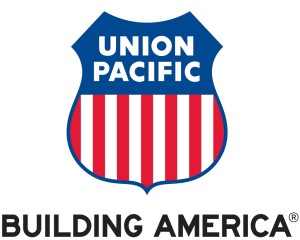John R. Simon is Senior Vice President of Human Resources for Pacific Gas and Electric Company, one of the largest combination natural gas and electric utilities in the United States. PG&E has 22,000 employees who serve 15 million people throughout a 70,000-square-mile service area in California.

John R. Simon, Senior Vice President of Human Resources for Pacific Gas and Electric Company
Our customers rely on us to provide safe, reliable and affordable gas and electricity across Northern and Central California. Our workforce is the key to making that happen. Unfortunately, our company is faced with two converging workforce issues: 1) a significant number of employees will need to be replaced due to retirement or attrition over the next five years, and 2) we have a shortage of skilled candidates for our skilled craft jobs. Without a qualified pipeline of candidates ready to join the ranks of PG&E, it will be extremely difficult for us to do our job.
A Unique Model
PG&E has taken this matter into our own hands by creating PowerPathway a collaborative workforce development model built upon the public-private partnerships between PG&E, California community colleges and universities, community-based training organizations, the public workforce development system, unions and other industry employers. At the heart of this model is the need to support the development of Career Technical Education (CTE) programs that meet the workforce needs of PG&E and the utilities industry.
CTE’s Role
The National Association of State Directors of Career Technical Education Consortium’s (NASDCTEc) vision for CTE is partially based on the principal that CTE must actively partner with employers to design and provide high-quality, dynamic programs. With the guidance and partnership of business and industry professionals, CTE can help students understand the realities of the workforce and economy while preparing them to be college and career ready.
In the case of PG&E’s PowerPathway, candidates participate in a 240-hour utilities-industry CTE program. Coursework for the training program includes basic gas and electricity, safety, physical conditioning, math, reading and other employability subjects vital to workplace success. Upon successful completion of the program, graduates receive a certificate of completion from the community college and PG&E’s PowerPathway. These certificates demonstrate that the graduate is a work-ready and competitive candidate for employment within the energy and utilities sector. Note: Some community colleges also offer credit for successful completion of the program.
Successes – The Numbers
PowerPathway started in 2008, graduating about 75 students the first year. Fast forward five years, and we’ll be graduating more than 250 students in 2013. Not only are we scaling our programs, we are consistently placing PowerPathway graduates into industry positions. As of the first quarter of 2012, 71 percent of graduates have been hired into industry positions, a majority with PG&E. The top five jobs in which students have found employment at PG&E are utility worker, apprentice electrician, gas service rep, materials handler and nuclear security guard.
Seventy percent of those hired from the PowerPathway candidate pool progress into apprenticeships or higher job classifications within one year of hire. The rate of retention after six months is also significantly higher for those who have graduated from PowerPathway – 98 percent versus 88 percent for the same skilled craft classifications. In addition, nearly 90 percent of PG&E supervisors who have hired PowerPathway graduates said they were either satisfied or very satisfied with their performance.
A Win-Win for AllÂ
By collaborating with CTE and local partners in the community, PG&E has been able to grow a more qualified and career-ready pool of candidates to join our workforce. In addition, building a strong internal brand for PowerPathway programs as a trusted source of quality candidates has been a huge component of sustainability and scalability for our programs. PG&E is a strong proponent of investing in its future workforce, and we’ve found a model that works. You can learn more about PowerPathway at www.pge.com/powerpathway. We encourage all companies to consider leveraging the power of public-private partnerships to advance CTE and strengthen their future pipeline of talent.
The Friends of CTE Guest Blog Series provides advocates – from business and industry, researchers and organizations – an opportunity to articulate their support for Career Technical Education. The monthly series features a guest blogger who provides their perspective on and experience with CTE as it relates to policy, the economy and education.
Are you interested in being a guest blogger and expressing your support for CTE? Contact Melinda Findley Lloyd, Communications Consultant, at [email protected].







